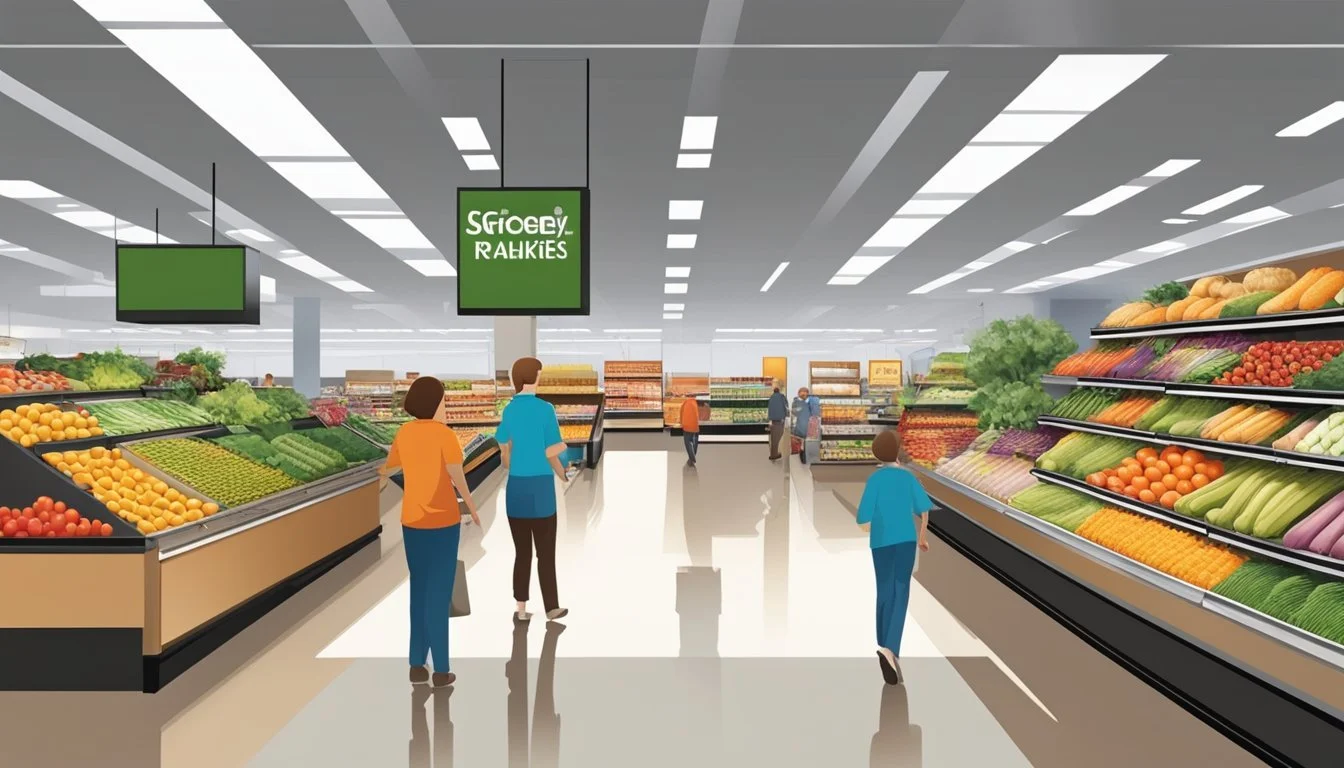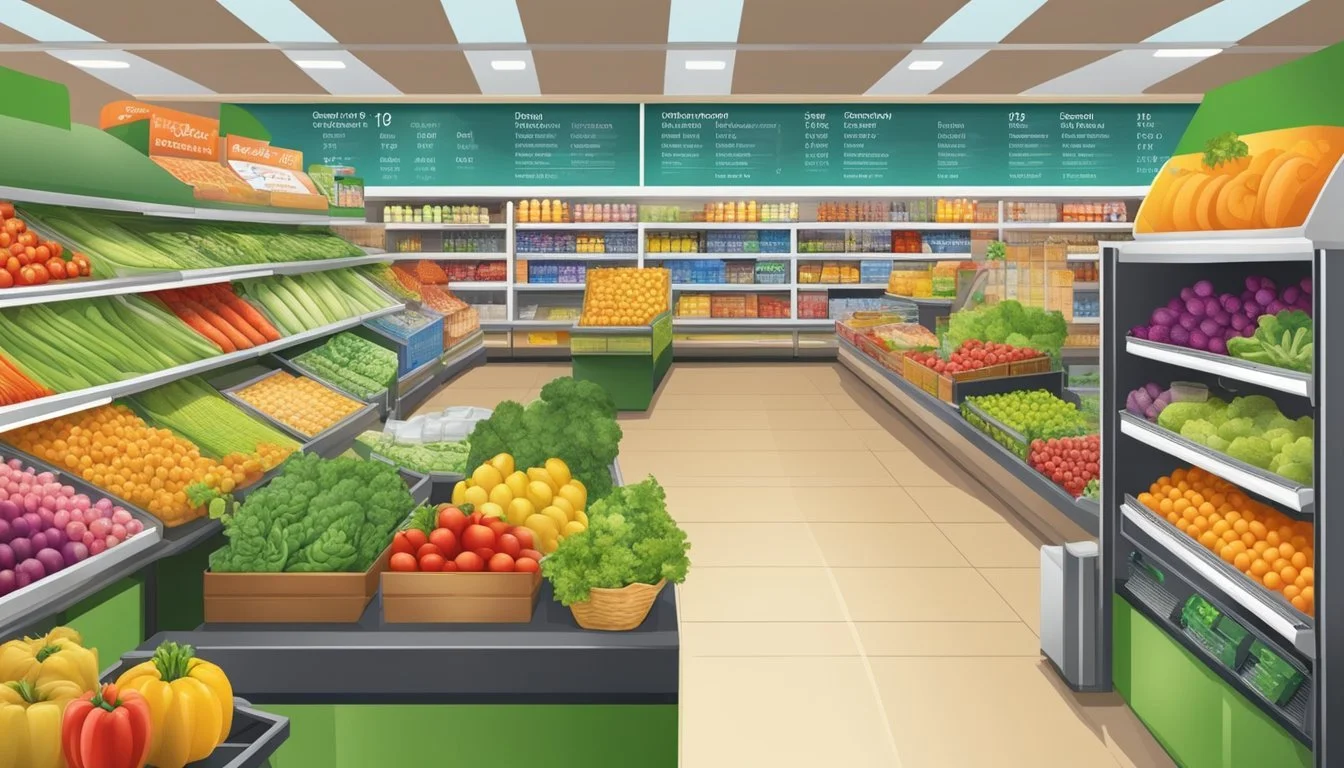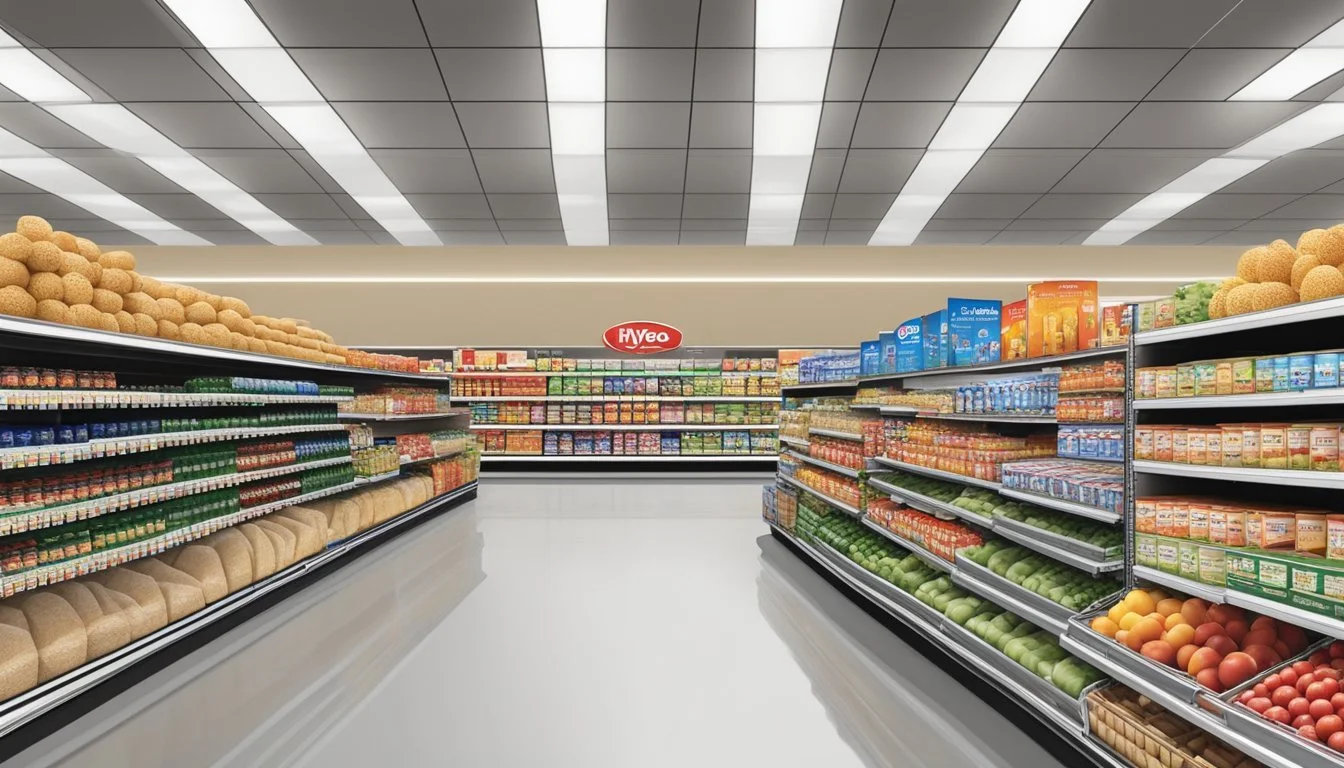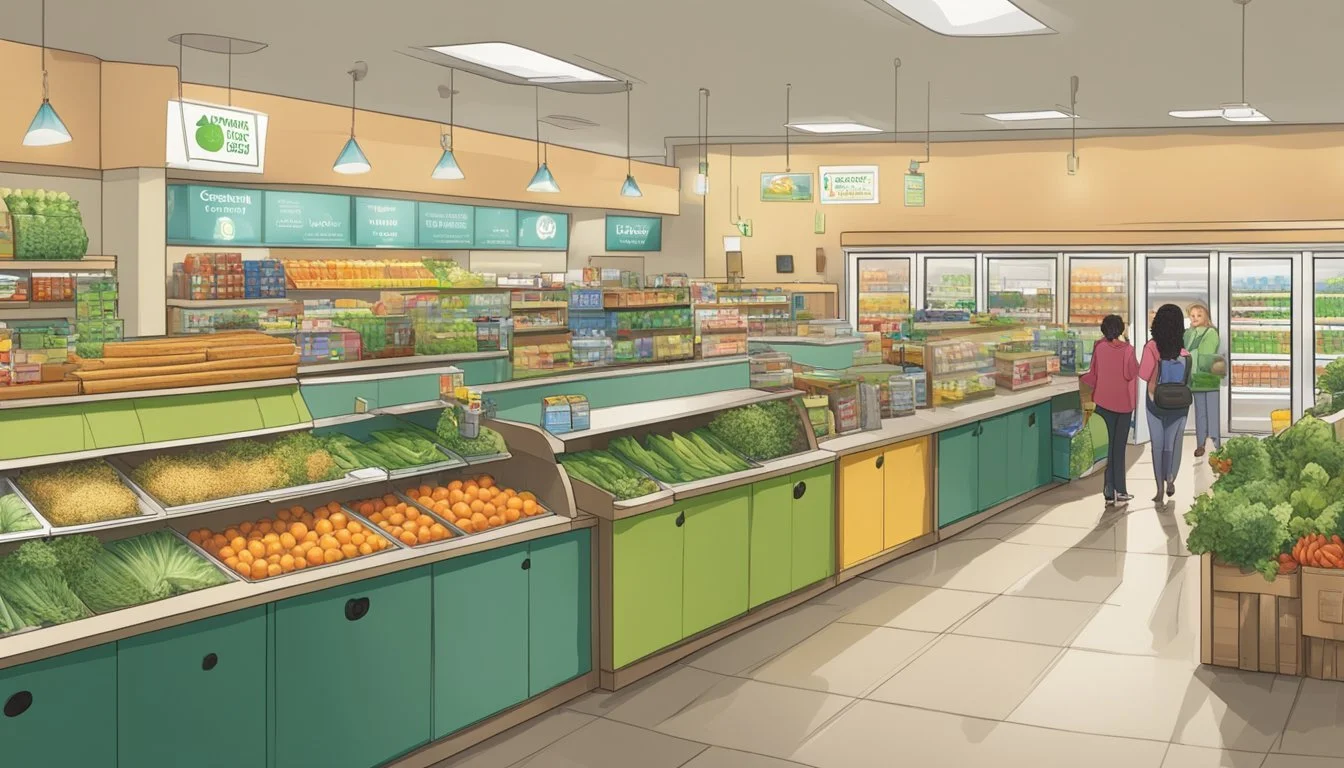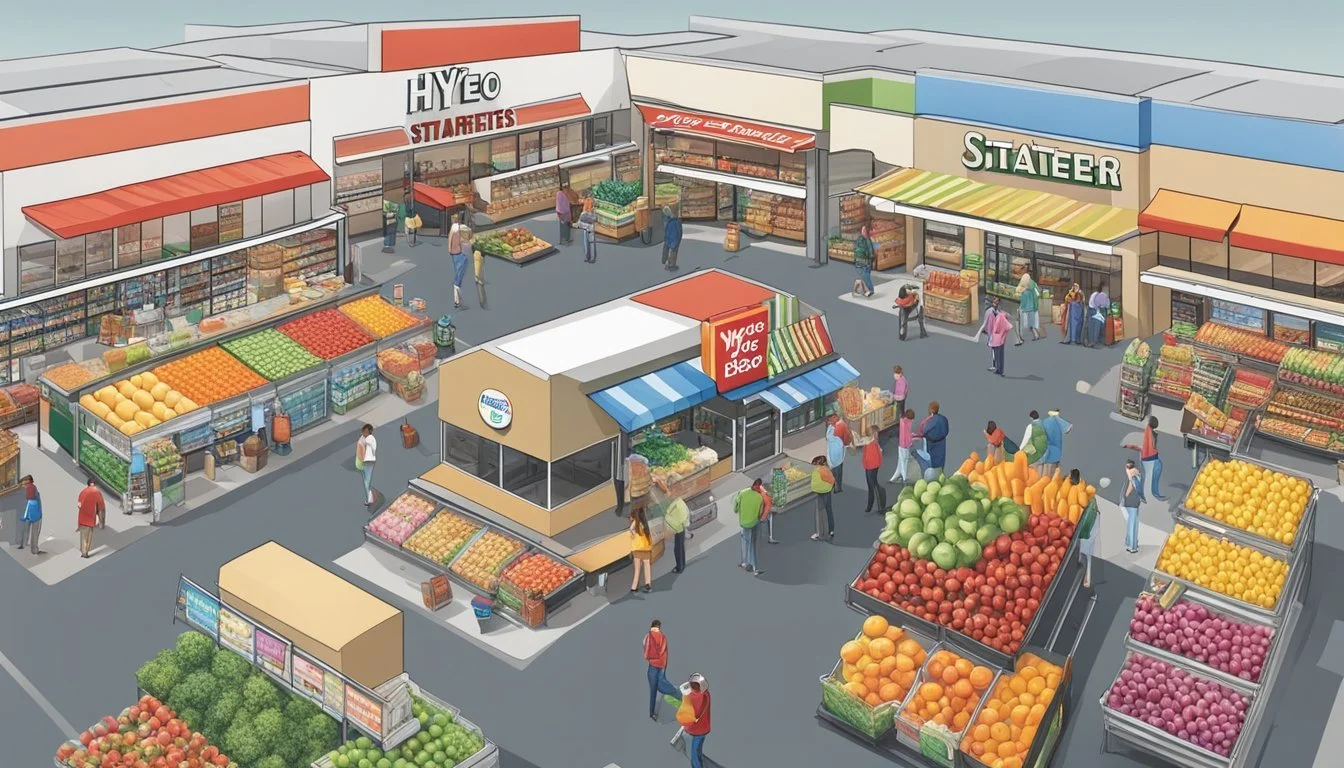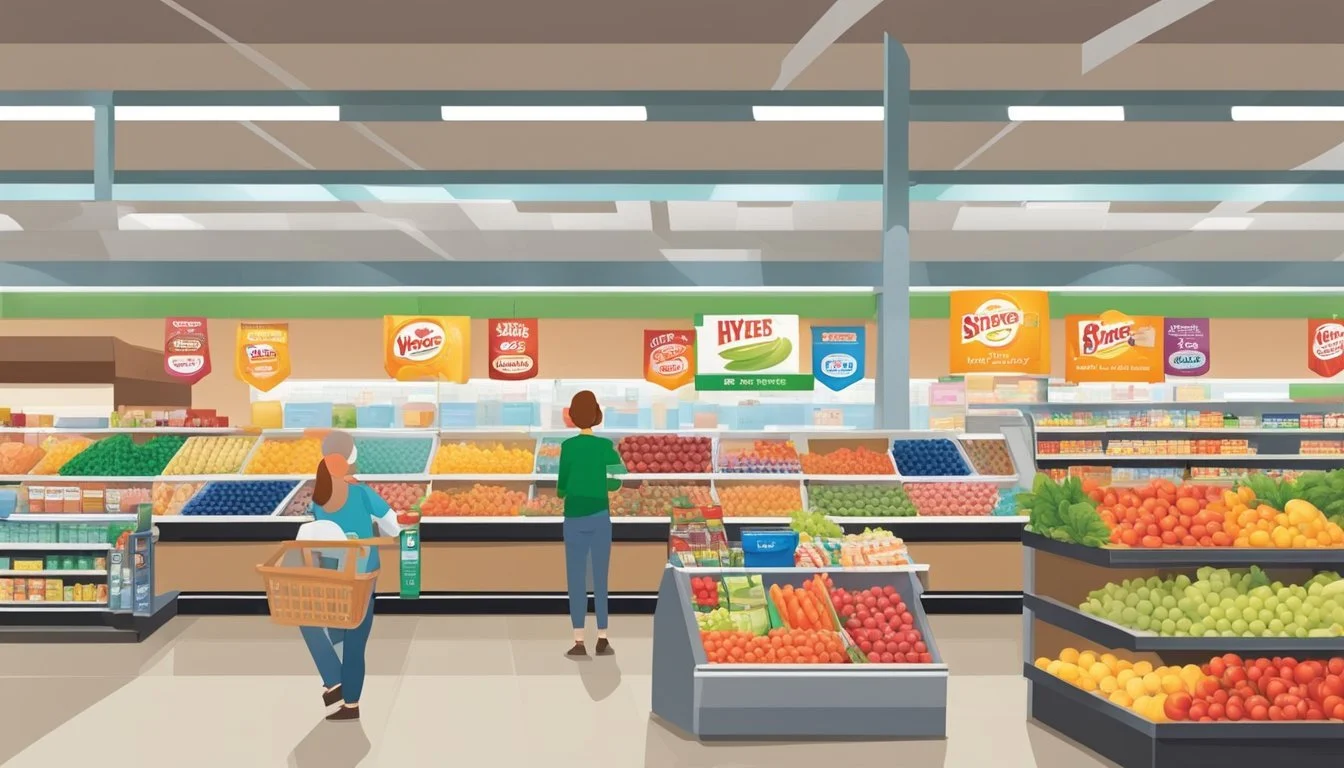Hy-Vee vs Stater Bros. Markets
A Comprehensive Comparison of Price, Quality, and Selection
Grocery shopping is an essential part of everyday life, and choosing the right supermarket can significantly impact your budget and overall satisfaction. Two popular grocery chains, Hy-Vee and Stater Bros. Markets, have garnered loyal customer bases in their respective regions.
Hy-Vee, headquartered in West Des Moines, Iowa, is known for its strong presence in the Midwest. Stater Bros. Markets, based in San Bernardino, California, serves customers primarily in Southern California. While both chains offer competitive prices and quality products, Hy-Vee generally provides a wider range of services and a more diverse shopping experience compared to Stater Bros. Markets.
Each chain has its unique strengths and caters to different customer preferences. Factors such as product selection, pricing, customer service, and store atmosphere all play crucial roles in determining which grocery store better suits individual needs.
History and Background
Hy-Vee and Stater Bros. Markets have rich histories spanning decades in the American grocery industry. Both companies started as small local stores and grew into major regional supermarket chains.
Hy-Vee: Since 1930
Hy-Vee traces its roots to 1930 when Charles Hyde and David Vredenburg opened a small general store in Beaconsfield, Iowa. The company name combines the founders' surnames.
In 1938, Hy-Vee introduced its first supermarket format store. The 1960s and 1970s saw rapid expansion as Hy-Vee opened stores across Iowa and neighboring states.
Hy-Vee entered new markets in the 1980s, including Lincoln and Omaha, Nebraska. In 1988, the company expanded to Kansas with a store in Overland Park.
Today, Hy-Vee operates over 280 stores across eight Midwestern states. The company remains employee-owned, a structure in place since 1960.
Stater Bros. Markets: A Legacy Supermarket
Stater Bros. Markets began in 1936 when twin brothers Cleo and Leo Stater purchased a small grocery store in Yucaipa, California for $600. The brothers were World War II veterans continuing America's entrepreneurial tradition.
The company steadily grew its presence in Southern California over the following decades. By the 1980s, Stater Bros. had expanded to over 100 locations.
Today, Stater Bros. operates 171 supermarkets throughout Southern California. The chain remains privately held and headquartered in San Bernardino.
Stater Bros. takes pride in its American roots and long history of serving local communities. The company has maintained its regional focus rather than expanding nationwide.
Store Footprint and Presence
Hy-Vee and Stater Bros. Markets have distinct regional presences in the United States. Their store footprints reflect different expansion strategies and target markets.
National and State-Level Reach
Hy-Vee operates over 240 supermarkets across eight Midwestern states. Its core markets include Iowa, Illinois, Kansas, Minnesota, Missouri, Nebraska, South Dakota, and Wisconsin. The company maintains a strong presence in both urban and rural communities.
Stater Bros. Markets, in contrast, focuses exclusively on Southern California. With over 170 stores, the chain serves customers primarily in San Bernardino, Riverside, Los Angeles, Orange, and San Diego counties. This concentrated approach allows Stater Bros. to tailor its offerings to local preferences.
Hy-Vee's broader geographic spread provides access to diverse markets. The company adapts store formats to suit different locations, from small-town grocers to large urban supermarkets.
Stater Bros. benefits from deep market penetration within its region. Its stores are often conveniently located in neighborhood shopping centers, fostering customer loyalty.
Pricing and Saving Opportunities
Hy-Vee and Stater Bros. Markets offer different pricing strategies and savings opportunities for shoppers. Their everyday prices, promotional deals, and loyalty programs can significantly impact customers' grocery bills.
Comparison of Everyday Prices
Hy-Vee's regular prices tend to be higher than some competitors. A market basket comparison showed Hy-Vee's total coming in at $75.76, placing it in the middle range among surveyed stores. Stater Bros. Markets, on the other hand, often has lower everyday prices. In a direct comparison with another chain, Stater Bros. came out $3.05 cheaper on a similar basket of goods, representing a potential 3% savings for shoppers.
Key items like milk, bread, and produce can show notable price differences:
Milk: Hy-Vee $3.29/gallon, Stater Bros. often lower
Bread: Hy-Vee $2.49/loaf, Stater Bros. typically less
Bananas: Hy-Vee $0.59/lb, Stater Bros. frequently cheaper
Discounts and Deals Analysis
Both chains offer weekly sales and promotions to attract customers. Hy-Vee frequently runs "10 for $10" deals on select items. Stater Bros. is known for its competitive meat prices, often featuring specials like "2 for $5" on chicken breasts.
Hy-Vee's digital coupons and app-exclusive offers provide additional savings. Stater Bros. focuses more on in-store specials and manufacturer coupons. Both stores have been known to price-match competitors' ads, though policies may vary by location.
Sale cycles typically run Wednesday to Tuesday for both chains. Savvy shoppers can save significantly by planning purchases around these weekly promotions.
Loyalty Programs and Savings
Hy-Vee's Fuel Saver + Perks program allows customers to earn points on purchases, which can be redeemed for discounts on gas or groceries. Members also receive personalized deals based on shopping habits.
Stater Bros. offers a more straightforward approach with its weekly ad specials available to all shoppers without a membership requirement. However, they lack a comprehensive loyalty program comparable to Hy-Vee's.
Hy-Vee's program can lead to substantial savings for frequent shoppers:
Earn 1 point per $1 spent
100 points = $0.10 off per gallon of gas
Special promotions can boost point earnings
While Stater Bros. doesn't offer ongoing rewards, their everyday low prices and frequent sales aim to provide consistent value to all customers.
Product Quality and Selection
Hy-Vee and Stater Bros. Markets both offer a range of products to meet customer needs. Their selections vary in terms of organic produce, meat quality, and brand offerings.
Assortment of Organic Produce
Hy-Vee provides a wide array of organic fruits and vegetables. Their produce sections often feature locally-sourced options alongside national organic brands. Customers can find seasonal organic items and unique varieties.
Stater Bros. Markets also stocks organic produce, though their selection may be more limited. They focus on popular organic staples like apples, carrots, and leafy greens. Both chains prioritize freshness, but Hy-Vee tends to have a broader organic range.
Freshness and Quality of Meats
Hy-Vee is known for its high-quality meat department. They offer prime cuts, grass-fed options, and specialty meats. Many Hy-Vee stores have in-house butchers who can provide custom cuts and advice.
Stater Bros. Markets prides itself on fresh, affordable meats. Their selection includes standard cuts and some specialty items. While perhaps not as extensive as Hy-Vee's, Stater Bros. meats are generally well-regarded for quality and value.
Store Brand versus National Brands
Hy-Vee's store brand products span various categories, from pantry staples to prepared meals. They offer multiple tiers, including value and premium lines. These often compete with national brands in quality and price.
Stater Bros. Markets carries a mix of store brand and national brand items. Their store brands focus on everyday essentials and offer competitive pricing. National brands are well-represented, giving customers ample choice.
Both chains stock popular national brands, ensuring customers can find familiar products. Hy-Vee may have a slight edge in specialty and gourmet national brand offerings.
Shop Experience and Convenience
Hy-Vee and Stater Bros. Markets offer distinct shopping experiences tailored to their respective customer bases. Both chains prioritize convenience and efficiency, but with different approaches to in-store layout, prepared food options, and digital services.
Checkout Efficiency and In-Store Navigation
Hy-Vee stores typically feature wide aisles and clear signage, making navigation straightforward. They often incorporate self-checkout options alongside traditional lanes to reduce wait times. Many locations offer mobile scanning technology for an even faster checkout process.
Stater Bros. Markets focuses on a more traditional grocery store layout. Their stores are generally smaller than Hy-Vee's, which can make navigation quicker for shoppers familiar with the layout. Checkout lines at Stater Bros. are known for their efficiency, with a focus on well-trained staff rather than self-service options.
Both chains strive to minimize customer wait times, but their strategies differ based on store size and target demographics.
Availability of Prepared Foods and Deli
Hy-Vee excels in its prepared food offerings. Many locations feature extensive hot food bars, salad bars, and made-to-order stations. Their delis often include sushi counters, pizzerias, and specialty sandwich shops.
Stater Bros. Markets maintains a more conventional approach to prepared foods. Their delis offer standard fare such as rotisserie chickens, salads, and sliced meats and cheeses. While the selection may be more limited than Hy-Vee's, Stater Bros. focuses on quality and value in their prepared food items.
Both chains prioritize freshness in their deli departments, but Hy-Vee generally provides a wider variety of ready-to-eat options.
Grocery Delivery and Online Shopping Options
Hy-Vee has invested heavily in digital services. They offer a robust online shopping platform with both delivery and curbside pickup options. Their mobile app allows customers to create shopping lists, access digital coupons, and manage prescriptions.
Stater Bros. Markets has been expanding its online presence. They've partnered with Instacart to provide delivery services and have introduced their own curbside pickup program. While their digital offerings may not be as extensive as Hy-Vee's, Stater Bros. is actively working to enhance their online shopping experience.
Both chains recognize the growing importance of e-commerce in the grocery sector and continue to develop their digital capabilities to meet customer demands.
Customer Perception and Loyalty
Customer perception and loyalty play crucial roles in the success of Hy-Vee and Stater Bros. Markets. Both grocery chains have cultivated distinct reputations and followings among their respective customer bases.
Survey Results and Consumer Ratings
Recent surveys indicate that Hy-Vee enjoys high consumer ratings for its customer service and store cleanliness. Customers appreciate the employee-owned company's focus on local communities and product quality.
Stater Bros. Markets, while less nationally recognized, maintains strong regional loyalty in Southern California. Their emphasis on competitive pricing and fresh produce resonates with budget-conscious shoppers.
Consumer reports suggest that Hy-Vee outperforms many competitors in overall satisfaction. The chain's innovative offerings, such as in-store restaurants and health clinics, contribute to positive perceptions.
Stater Bros. Markets receives praise for its no-frills approach and consistency in pricing and product availability.
Understanding the Loyal Following
Hy-Vee's loyal following stems from its community involvement and personalized shopping experiences. The company's Fuel Saver program and digital coupons enhance customer retention.
Shoppers trust Hy-Vee for its diverse product range, including many private-label items. This trust translates into repeat business and word-of-mouth recommendations.
Stater Bros. Markets cultivates loyalty through its longstanding presence in local neighborhoods. Customers value the chain's commitment to supporting regional producers and maintaining a familiar shopping environment.
The company's "Stater Bros. Charities" initiative strengthens community ties, fostering a sense of reciprocal support among patrons.
Both chains benefit from customer loyalty programs that reward frequent shoppers, further solidifying their respective customer bases.
Sustainability and Community Involvement
Hy-Vee and Stater Bros. Markets both prioritize environmental stewardship and community support. Their initiatives focus on reducing environmental impact and helping local families in need.
Environmental Initiatives
Hy-Vee demonstrates a strong commitment to ocean conservation. The company sources 100% of its fresh and frozen seafood from environmentally responsible suppliers. This practice helps protect marine ecosystems and ensure sustainable fish populations.
Stater Bros. Markets emphasizes energy reduction and recycling efforts. The company has implemented sustainable business practices to decrease its carbon footprint and water usage. These measures contribute to long-term environmental protection in the communities Stater Bros. serves.
Both retailers have taken steps to reduce plastic waste. They offer reusable shopping bags and encourage customers to bring their own containers for bulk items.
Support for Local Families and Communities
Hy-Vee partners with major consumer goods companies to combat food insecurity. The End Summer Hunger campaign, a collaboration with Kellogg Co. and Keurig Dr Pepper, provides resources to hunger relief organizations. This initiative helps families access nutritious meals during challenging times.
Stater Bros. Markets focuses on supporting local charities and food banks. The company regularly donates food and funds to community organizations that assist families in need.
Both retailers offer programs to support local farmers and producers. They stock locally-sourced organic products, giving customers access to fresh, sustainable options while supporting regional economies.
Comparison with Competitors
Hy-Vee and Stater Bros. Markets face stiff competition from national chains and regional grocers. Their pricing, quality, and market positioning vary significantly compared to other major players in the industry.
Market Leaders and Alternative Stores
Walmart and Kroger dominate the U.S. grocery market, with extensive national reach. Walmart offers consistently low prices, while Kroger balances affordability with a wider product selection. Costco and Sam's Club attract bulk buyers with competitive pricing on large quantities.
Regional chains like Publix in the Southeast and H-E-B in Texas command strong customer loyalty. Trader Joe's and Aldi focus on private-label products to keep costs down. Whole Foods targets the premium organic segment.
Safeway and Albertsons, now merged, compete in many of the same markets as Hy-Vee and Stater Bros. Target has expanded its grocery offerings, appealing to shoppers seeking convenience alongside general merchandise.
Price and Quality Across Various Chains
Walmart consistently ranks as one of the lowest-priced grocery options. WinCo and Grocery Outlet also offer significant savings, with prices up to 30% below average in some areas.
Aldi and Lidl focus on no-frills shopping experiences to keep prices low. Trader Joe's balances affordable prices with unique, high-quality products.
Wegmans and Publix score highly for quality and customer service, though their prices tend to be higher. Whole Foods maintains a reputation for premium organic products at premium prices.
Kroger and Safeway fall in the mid-range for both price and quality. Meijer and Food Lion offer competitive prices in their respective regions.
Conclusion and Recommendations
Hy-Vee and Stater Bros. Markets both offer quality grocery shopping experiences, but cater to different regions and customer needs. Hy-Vee excels in its Midwest locations with a wide range of services and store formats.
Stater Bros. Markets maintains a strong presence in Southern California, focusing on fresh produce and competitive pricing. Each chain has its strengths in terms of product selection, customer service, and community involvement.
For shoppers in the Midwest, Hy-Vee provides a comprehensive shopping experience with additional amenities like in-store restaurants and health clinics. Stater Bros. Markets appeals to California customers seeking a more traditional supermarket format with emphasis on quality produce.
Price-conscious consumers may find better deals at Stater Bros., while those seeking a broader range of services might prefer Hy-Vee. Both chains prioritize customer satisfaction and maintain clean, well-organized stores.
Ultimately, the choice between Hy-Vee and Stater Bros. Markets depends on individual preferences and location. Shoppers should consider factors such as proximity, product variety, and desired amenities when selecting their preferred grocery store.



